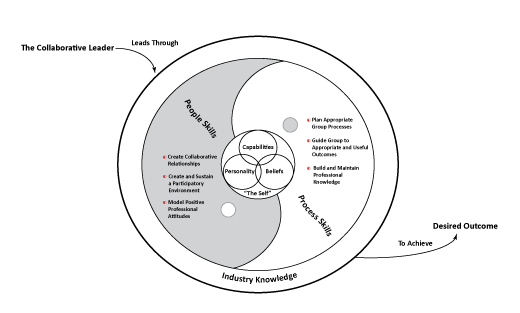
Being a Leader Requires Flexibility | Gary Rush Facilitation
There is no one leadership style that works all the time. To be a Great Leader, it requires that you adjust your style to the needs of those you lead. I train “how to” be Collaborative Leaders and I have been in leadership roles most of my life. The one constant is that nothing is constant. When you lead, flexibility is more than required – it is survival.
“A chieftain’s personal example has a direct and dynamic influence on the behavior of the Huns. This simple truth should suffice as a compelling reason for a chieftain to provide the example he wants his Huns to follow.” -- Wess Roberts, Leadership Secrets of Attila the Hun
My “Huns” are those I lead. I was the leader when I owned my restaurant. I was the leader when I was the chair of the International Association of Facilitators (IAF). Both instances required very different styles. My goal in both situations was consensus of the team – whenever everyone was on board, everything worked better. I promote a facilitative style of leadership when I train. However, I also need to ensure that the future leaders I train understand that every team is different and each has a unique set of needs. Engaging staff is wonderful and helps in all cases. Knowing when to facilitate and when to direct, however, is critical to the success of the team.
At the restaurant, I had people with limited experience and most of it was working for bosses who just dictated what to do. I wanted to engage them and make them feel part of the business. This required nurturing because they were unaccustomed to being treated that way. They needed me to teach them skills on how to work as a team and work in a fine dining restaurant. They needed to feel valued so one practice we followed was that no one left at closing until everyone finished his or her work. Those who finished early either helped the others or waited until all were finished. We left together, hugged each other good night, and went home. We also engaged them by holding after action review sessions after work. I would facilitate a discussion about what worked and what needed to improve. Everyone participated and contributed ideas. We had an open door whereby anyone could talk to us anytime about anything. The staff became like family. When we closed, three of them even volunteered to work for nothing until we could get the restaurant solvent. We had little or no problems with staff – something unusual in the restaurant business.
With the IAF Board, the situation was quite different. Everyone on the board was a facilitator and over half of them were self-employed consultants. They had all the skills needed. These were strong people, from over a dozen countries, who were accustomed to being in charge. They also had a lot of strong opinions. The challenge wasn’t nurturing them; it was getting them moving towards a common vision and then clearing barriers so that they could run. So, I facilitated discussions, ensured that everyone participated, and fed back what I heard so that they began to hear each other. This helped them find a common goal. After that, I let them run.
In both situations, I was facilitative in my leadership style most of the time. With the IAF Board, it was pretty much all the time – dictating just wasn’t viable. Facilitating everyone to the same goal was critical. With the restaurant staff, during a service rush, i.e., when we had 40 customers to feed right away, I had to direct so that the food went out properly at the right time and at the right temperature. Facilitating a discussion would have ruined the food.
Be Flexible. ![]()